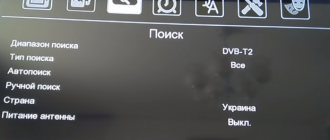As part of the latest wave of shutdowns, more than 3 thousand of the 13 thousand analogue transmitters operating on Russian air will stop broadcasting federal TV channels. Broadcasting will stop, in particular, in St. Petersburg and the Leningrad region, as well as Sevastopol and Crimea. The shutdown will affect the Astrakhan and Volgograd, Orenburg and Saratov regions, Bashkiria and Tatarstan, in Siberia - Transbaikalia and the Altai Republic, and in the North Caucasus - Dagestan and Ingushetia. In addition, analogue broadcasting of federal channels will be stopped in two regions of the Central Federal District - Kaluga and Kursk, four regions of the North-West - Vologda, Murmansk, Pskov regions and Karelia, as well as in the Chelyabinsk region.
RTRS recalled that a digital terrestrial television broadcasting network has been created in Russia, which includes 5,040 transmitting stations, each of which broadcasts 20 digital TV channels. Their signal covers more than 17 million square meters. km, the coverage of Russians by digital broadcasting reaches 98.4%.
The creation of a digital television network was a key event of the federal target program “Development of television and radio broadcasting in the Russian Federation for 2009-2018.” Over the years the program has been implemented, about 100 million televisions supporting the digital standard and about 20 million set-top boxes for old televisions have been sold in the country. This made it possible to begin a phased shutdown of analogue broadcasting. The first region where it stopped was the Tver region on December 3, 2021. After that, it was disabled in another 63 regions: February 11 (7 regions), April 15 (20) and June 3 (36).
Shutdown schedule
The plan to phase out analogue television in Russia will be carried out in three successive stages: February 11, April 15 and June 3. At the same time, as part of the pilot project, “analogue” has already been turned off in the Tver region - residents of the region have only had access to digital broadcasting since December 3, 2021.
On February 11, 2021, “analog” will be turned off in:
- Magadan region
- Penza region
- Ryazan region
- Tula region
- Ulyanovsk region
- Yaroslavl region
- Chechen Republic
A detailed report on the press conference held on the eve of the first stage of the analogue shutdown.
On April 15, 2021, “analog” will be turned off in:
- Amur region
- Ivanovo region
- Kemerovo region
- Kostroma region
- Kurgan region
- Lipetsk region
- Moscow region
- Novgorod region
- Sakhalin region
- Tyumen region
- Yamalo-Nenets Autonomous Okrug
- Kabardino-Balkarian Republic
- Karachay-Cherkess Republic
- Udmurt Republic
In the remaining 36 regions, including the Leningrad region, the Republic of Crimea, Tatarstan, Primorsky Krai and Khanty-Mansi Autonomous Okrug, the shutdown will occur on June 3, 2021.
What problems can the transition to digital TV cause?
How many problems will the residents of our country face when analogue television in Russia is switched off? This question interests many. It will be most difficult for residents of small settlements.
Providers are not very interested in bringing cable television and Internet to villages. However, the state undertakes to provide high-quality communications in every locality of the country. This will make it easier to use the new television format. To connect it you will need to purchase a special attachment. According to the subsidy, many low-income families will receive equipment for free.
Essentially, TV viewers have nothing to worry about. When switching to digital television, they will have access to watching their favorite channels in excellent quality. In addition, this makes it possible to use one radio frequency spectrum not for one, but for a dozen channels. Switching to cable or satellite TV will not be a problem. Another convenient option is to buy a new TV with Smart TV technology.
This way, when analogue TV is switched off, everyone can choose a different way to watch their favorite channels.
The shutdown will happen in 2021 only if more than 95% of the country's residents have access to mandatory channels. Providers receive an obligation to broadcast free of charge such TV channels as:
- Match TV
- Russia 1
- First channel
- Channel 5
- TV Center
- NTV
- Russia 24
- Russia K
- OTR
- Carousel
- Culture
- OTR
- Ren TV
- Saved
- STS
- Home
- Friday
- Star
- World
- TNT
- Muz TV
The fourth wave of analogue shutdown
On April 25, the Russian government decided to postpone the date of analogue shutdown in 21 regions of the third wave to October 14. The Ministry of Telecom and Mass Communications stated that the reasons for this transfer were the beginning of the holiday season, a high tourist flow in a number of regions, the need to give more time to low-income citizens so that they could take advantage of the benefits, as well as the difficulty in promptly identifying problems during a one-time disconnection from the “analog” territory. where 100 million people live.
On October 14, 2021, “analog” will be turned off in:
- Astrakhan region
- Belgorod region
- Volgograd region
- Vologda region
- Kaluga region
- Kursk region
- Leningrad region
- Murmansk region
- Orenburg region
- Pskov region
- Saratov region
- Chelyabinsk region
- Transbaikal region
- Altai Republic
- Republic of Bashkortostan
- Republic of Dagestan
- Republic of Ingushetia
- Republic of Karelia
- Republic of Crimea
- Federal city of St. Petersburg
- Federal city of Sevastopol
PS A timer has started working on the site, which counts down the time remaining until analogue broadcasting of 20 mandatory public TV channels is switched off. The time on the timer depends on the region where the user visiting the site is located.
What is the difference between analog TV and digital TV?
Analog are natural types of signals that surround us everywhere. In nature, all sounds, colors, images, tastes and smells occur and are transmitted as analog data. For example, in order to have a visual understanding of the world around us, it is important for a person to receive two types of analogue information - the color and brightness of the observed objects. In the retina, neurons become analogous to color and brightness, and a visual picture of reality appears in the brain. But this picture can be distorted by fog, rain, snow, smoke and other visual disturbances.
Information is transmitted in a similar way in analog television:
- First, the image and sound are received by the microphone and camera;
- Then converted into electrical signals, which become a simple analogue of sound and image;
- The TV tower transmits, and the household antenna receives the signal;
- On a TV, the analogue of an electrical signal will be sound and video.
Digital television works differently:
- At the first stage, in the camera and microphone the electrical signal will also become an analogue of sound and picture;
- But for further transmission, the analog-to-digital converter will encrypt the data into a digital code, and only then the tower will transmit the signal on the air.
- The TV antenna will receive digital data.
- Then it all depends on the TV. If it is equipped with a built-in digital-to-analog converter (receiver), then the TV will understand and process the signal. An image will appear on the screen and sound will be heard from the speakers. If not, then the data for it will remain undecrypted, so you won’t be able to watch your favorite TV shows.
Analogue broadcasting of regional channels
For regional channels, the State Commission on Radio Frequencies (SCRF) at a meeting on December 24 extended licenses for analogue broadcasting. It is expected that by mid-2021 a decision will be made on digital broadcasting of regional channels - in a third multiplex or in some other way.
Later, the Federation Council adopted a resolution noting the need to create a third multiplex with regional channels in 2020-2021.
According to the deputy director of the department of state policy in the field of media of the Ministry of Digital Development, Communications and Mass Communications Gennady Trubitsyn, many regional analogue broadcasting channels in large cities are already beginning to be switched off independently and continue to broadcast on cable.
How to check that your TV supports digital broadcasting?
According to statistics, most families use modern televisions that can receive a digital signal. Despite their prevalence and accessibility, many apartments still use old CRT installations, designed to receive only an analog signal. According to rough estimates, their number ranges from 16 to 33 million. According to the curators of the project, a few days before the outdated broadcasting is turned off, the letter “A” will appear on some channels in such installations. This is a signal that the receiver requires additional equipment to switch to digital.
Expert opinion
Mironova Anna Sergeevna
Generalist lawyer. Specializes in family issues, civil, criminal and housing law
In order not to remain cut off from the world when analogue television is switched off in January, it is recommended to check the technical specifications of the television receiver in advance. To do this, you can contact the federal “hotline” of FSUE “RTRS” by phone 8-800-220-2002 or the information portal rtrs.rf. Competent specialists will tell you how to carry out a check in the case of a specific TV model, guide you on the type of equipment you need, and help you install it.
User equipment
Users of analogue TVs will need to purchase a digital set-top box that supports the DVB-T2 standard, or replace their device with a modern digital TV.
RTRS notes that today more than 2 thousand models of television receivers that support DVB-T2 are sold in Russia (93% of all models available on the market). The cheapest TV with DVB-T2 costs from 6 thousand rubles. Prices for set-top boxes - from 1 thousand rubles.
For convenience, the website contains a list of 26 thousand TV models from 121 manufacturers, of which more than 8 thousand support the digital standard. If a consumer has an old analog TV, he is offered a choice of 276 models of digital set-top boxes.
On the website you can find sales points for the necessary equipment. The map contains addresses and contact details of more than 3 thousand stores. In them you can find modern TVs with support for the digital standard, digital set-top boxes, as well as indoor and outdoor UHF antennas.
How to receive monetary compensation
It should be noted that not all TV models can receive a digital signal. After analog TV is switched off in the regions, subscribers using equipment that supports the DVB-T2 broadcasting standard will be able to tune in free channels. These are mainly TVs produced after 2013.
What should owners of old TVs do? An alternative to purchasing new equipment is to use a digital receiver. After switching off analogue television in Russia, subscribers will be able to count on compensation for funds spent on the purchase of new equipment.
Only those citizens of the Russian Federation whose wages are below the subsistence level will be able to participate in the state support program. This indicator varies significantly depending on which region we are talking about. For example, the cost of living in St. Petersburg is 11,000 rubles, and in the capital of Russia – 16,200 rubles.
Low-income families will also be able to receive compensation. This status is secured only if each family member earns less than the subsistence level. The amount of monetary compensation varies in the range of 1000-6000 rubles.
The maximum monetary compensation will be received by Russian citizens who live in settlements not included in the coverage area of the terrestrial digital TV network. Almost all regions of the country have such settlements. The corresponding list can be found on the websites of regional MFCs.
Compensation is provided for the purchase of a digital tuner, UHF TV antenna or TV with DVB-T2 support. It is mandatory to keep the purchase receipt. Contact the MFC, having previously written an application for a refund of the money spent. Indicate the bank details to which the funds will be transferred. In addition to checks, you must attach copies of passports and income certificates for the 1st quarter of all family members to your application. Please also provide your registration information. After reviewing the application, the money will be credited to your account.
Unreached by digital
In total, 18,294 settlements in Russia are not covered by terrestrial digital television broadcasting. This follows from published on the website of the Ministry of Digital Development, Communications and Mass Communications.
In December, the State Duma introduced amendments to the Law “On Communications”, which oblige satellite operators to provide free access to broadcasting 20 public television channels to residents of settlements not covered by digital broadcasting.
The law establishes a ban on charging fees for the right to watch or listen to 20 mandatory public television channels (except for fees for providing access to the communication network) from residents of settlements who live outside the broadcast digital reception area.
The text of the law has been published.
What's next for television?
Now we are switching to digital, perhaps the time is not far off when we will give up cable.
Cable television can be modified by replacing TV channels, but it will no longer develop, since the frequency resource has been exhausted. People have to watch 20, maximum 60 TV channels in low resolution. There are no multimedia capabilities for cable television, while digital allows you to increase the number of TV channels, improve the quality of broadcasting, and introduce new formats, thereby meeting the needs of the modern audience.
We see this as a great opportunity for operators (technology development) and benefits for people - they will be able to choose what to watch.
Television, like newspapers and magazines, will not die because everyone now has the Internet. But it will change. Television is no longer tied to place and time; it is accessible from a phone or tablet; people themselves create their own broadcast network thanks to online services for TV series and movies. We are confident that the future belongs to Internet television, which has no restrictions on the integration of new services, allows you to broadcast TV channels in high definition, and is not tied to place and time.
In the meantime, we are stocking up on set-top boxes so that our grandmothers are not left without a TV, and even better, we connect them to the Internet so that they are always in touch with you.
TV Guide app
Users can set up digital terrestrial television reception using the Teleguide mobile application, which was released by RTRS. It contains a map of TV towers and parameters for setting up digital terrestrial TV channels. With its help, you can quickly find the nearest television transmitter and determine the direction of the antenna, as well as settings for a particular area.
TV Guide also has a weekly program schedule for TV channels of two multiplexes, which can be watched offline. In addition, the application can detect the channel turned on on the TV, display descriptions of programs and offer the user additional information: detailed descriptions of programs and films, announcements, Kinopoisk and IMDB ratings for films and TV series.
Over time, the functionality of the application will be expanded, and with its help it will be possible to check the television receiver for compatibility with digital terrestrial TV, watch video instructions for connecting “digital” and much more.
The application is available on IOS and Android platforms. Download links are published here.
Will you have to spend money?
The curators of the project to switch from analogue to digital broadcasting are in a hurry to reassure those who are afraid that after the New Year television will be paid. For persons who own receivers that meet the technical characteristics, nothing will change. They will only note the improvement in picture and sound quality on the TV. Everyone else will have to either purchase a new receiver that meets the stated requirements, or a special set-top box. The second option is much cheaper, and for some groups of citizens these costs can also be compensated. Operators are provided with a separate fee only for connecting additional channel packages.











